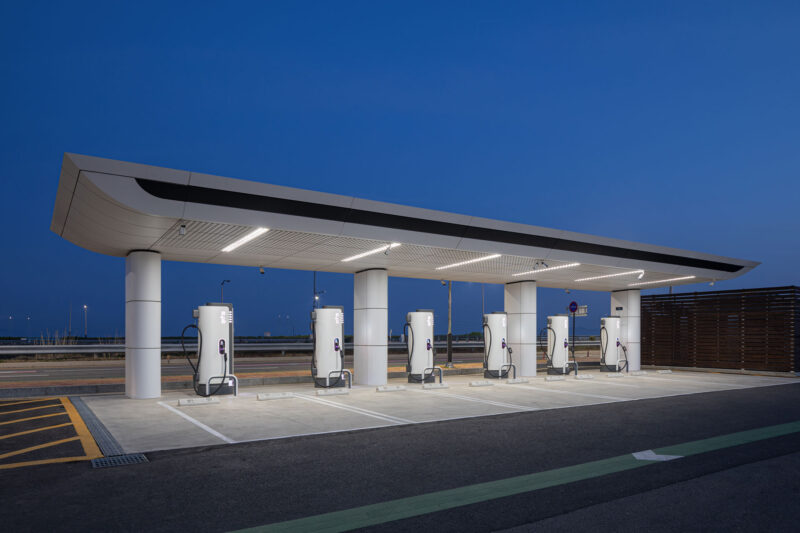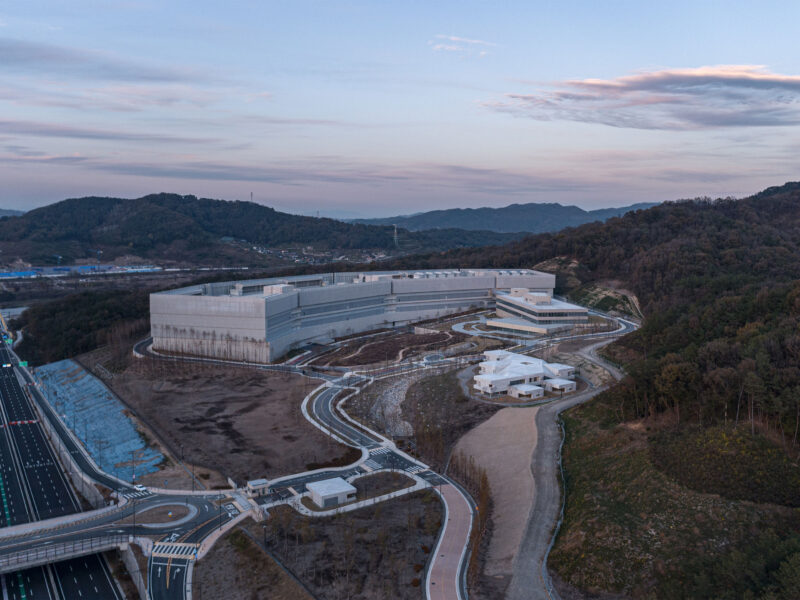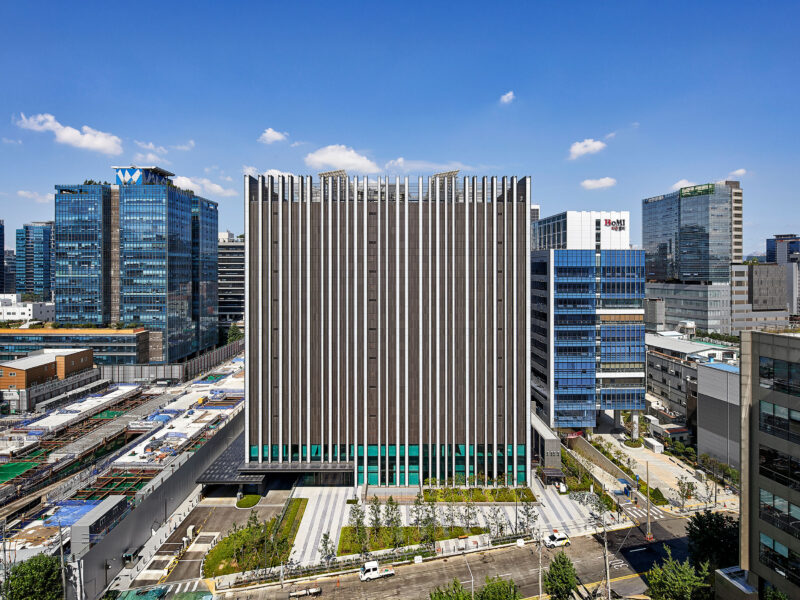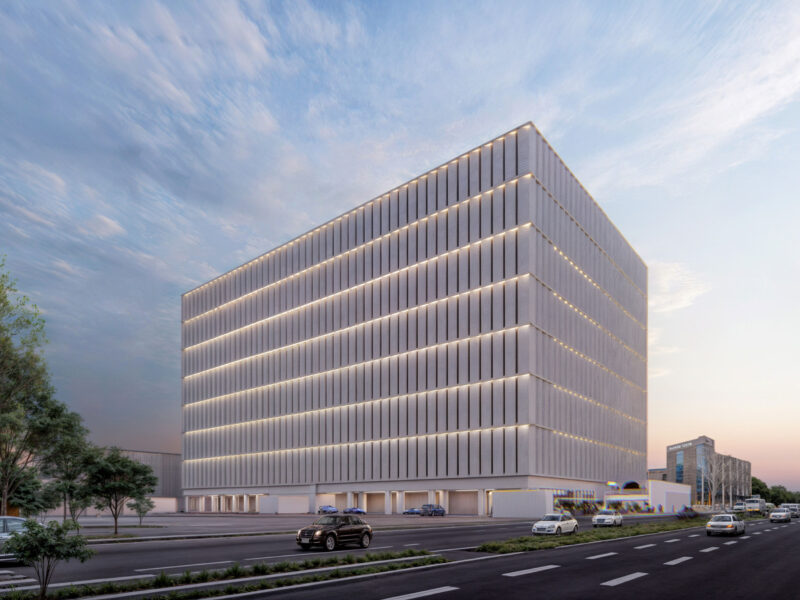
The Kia Intermodal Transfer Center in Sinwon-dong, established through collaboration between Kia and the Seocho District Office, is envisioned as a community complex for local residents that integrates the functions of an intermodal transfer center (public parking facility) with culture-based community spaces to promote sustainable local development. With the characteristics and context of the surrounding area considered, the building mass is broadly divided into the lower levels for public use and the upper levels for regular occupants’ use.
For exterior cladding, brick was chosen to serve as a “connection” between the parking facilities, the local self-support center, and community spaces for residents. Giving coherence to spaces of varying functions, it creates a user-friendly landscape and evokes a distinctive sense of warmth. The neatly organized horizontal lines visualize the coexistence of diverse layers while expressing the horizontal interconnection of functions and programs. The open front façade brings in steady daylight throughout the day, with Mount Cheonggye and its natural surroundings guiding the experience as an integral “part of the space.”

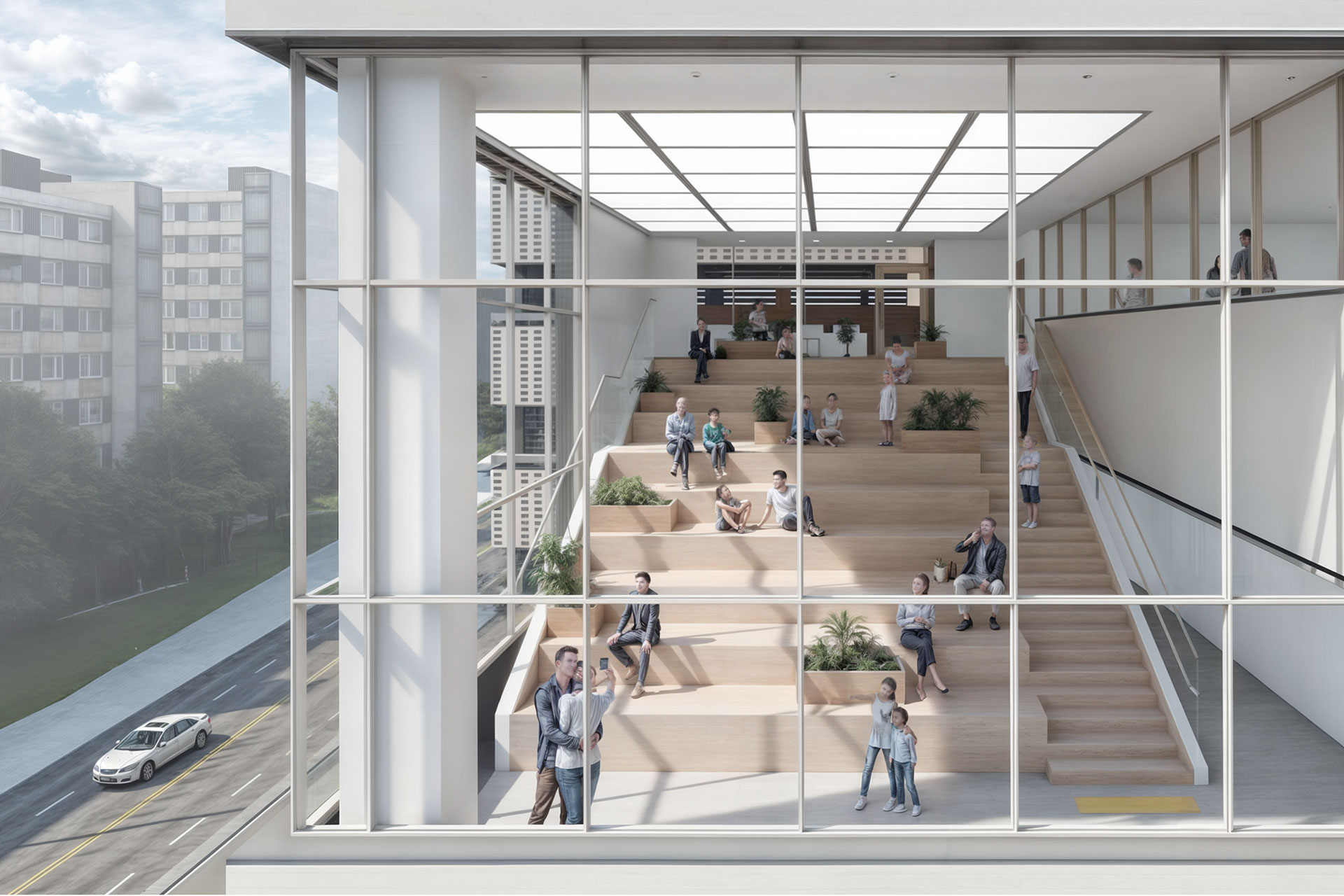
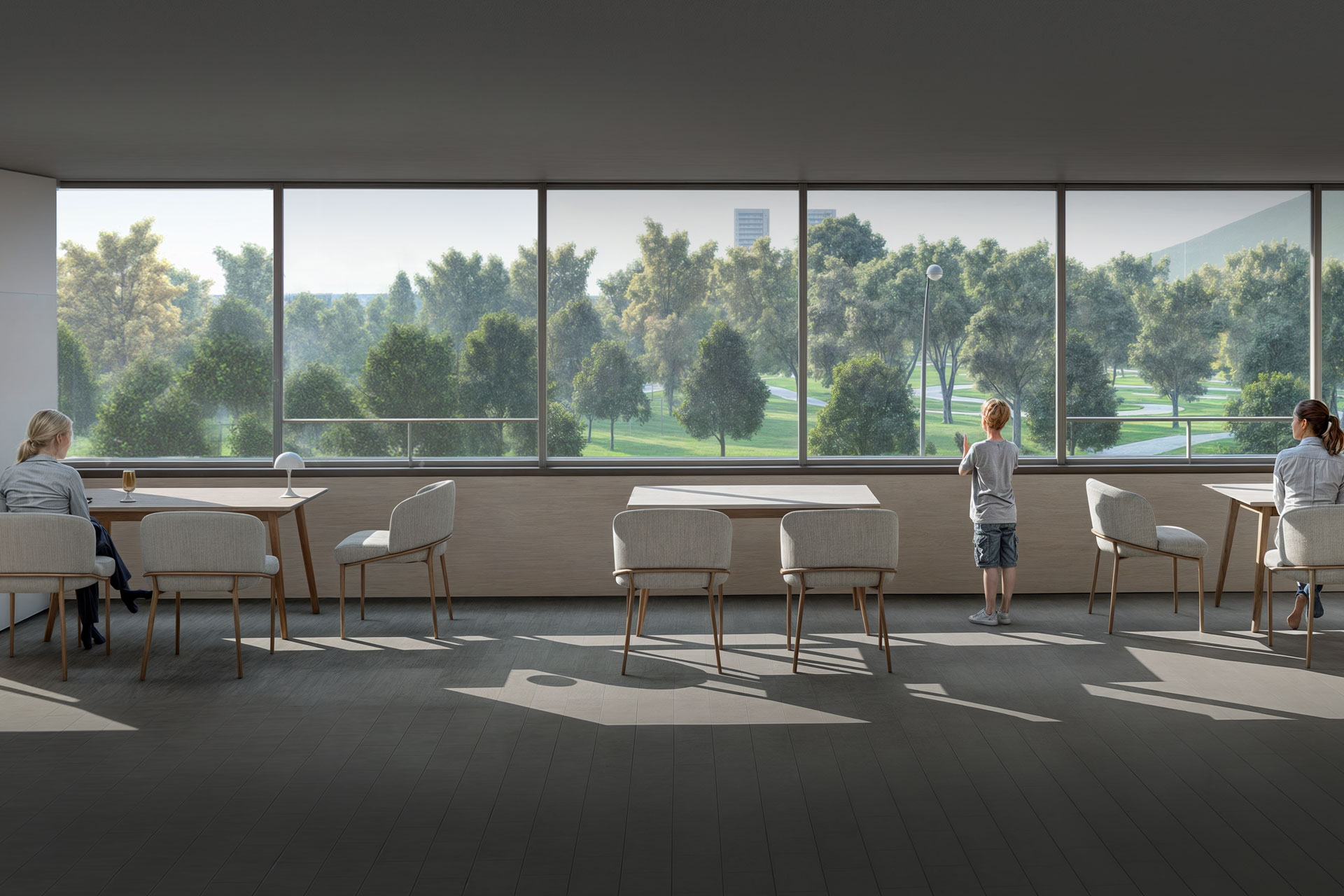
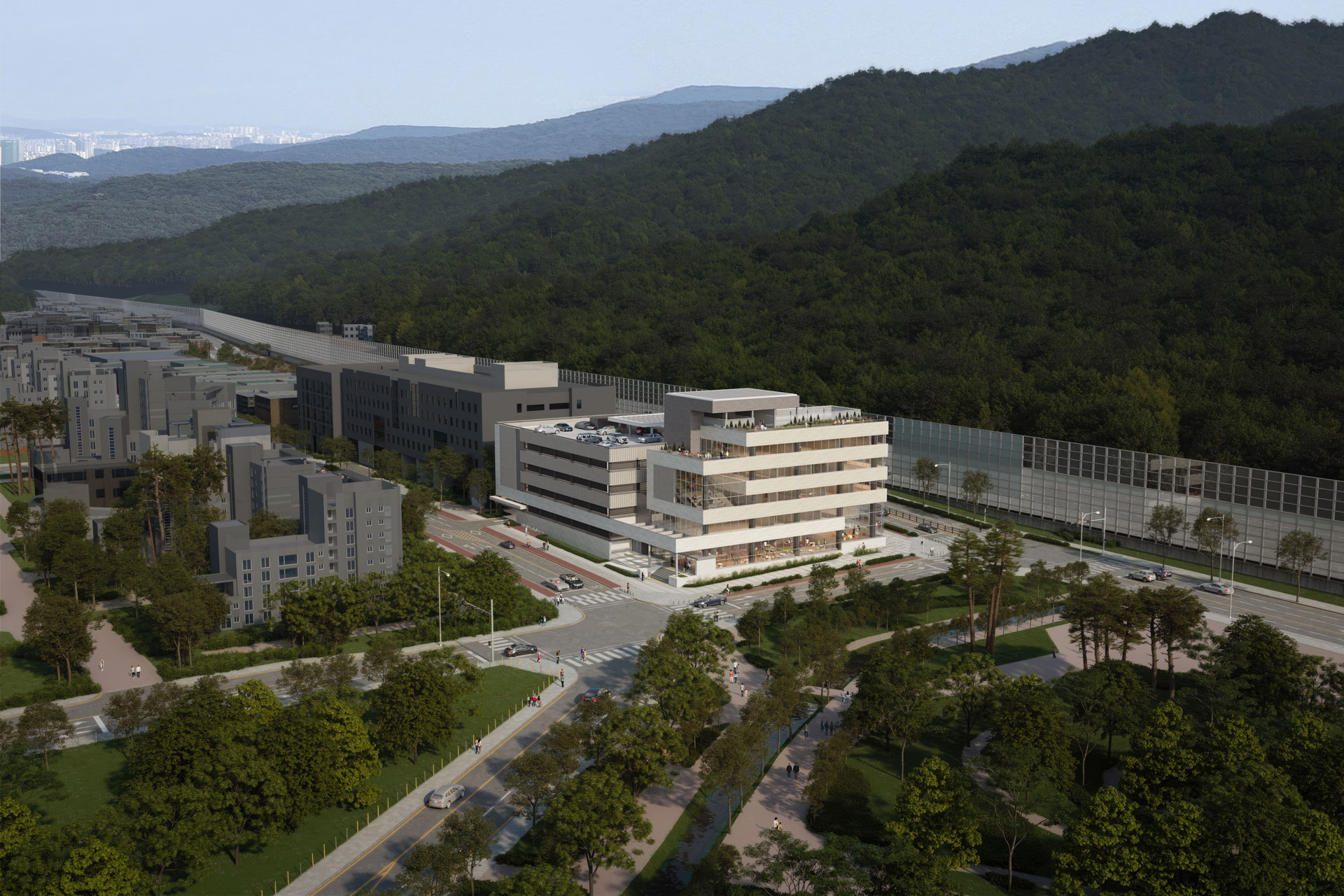
-
Status
In Progress
-
Client
Kia Motors Corporation
-
Program
Public
-
Design Year
2025
-
Location
Seocho-gu, Seoul
-
Site area
4,090.10m2
-
Gross Floor Area
9,945.67m2
-
Building Area
2,422.61m2
-
Number of Levels
B1, 5F
-
Design
The Kia Intermodal Transfer Center in Sinwon-dong, established through collaboration between Kia and the Seocho District Office, is envisioned as a community complex for local residents that integrates the functions of an intermodal transfer center (public parking facility) with culture-based community spaces to promote sustainable local development. With the characteristics and context of the surrounding area considered, the building mass is broadly divided into the lower levels for public use and the upper levels for regular occupants’ use.
For exterior cladding, brick was chosen to serve as a “connection” between the parking facilities, the local self-support center, and community spaces for residents. Giving coherence to spaces of varying functions, it creates a user-friendly landscape and evokes a distinctive sense of warmth. The neatly organized horizontal lines visualize the coexistence of diverse layers while expressing the horizontal interconnection of functions and programs. The open front façade brings in steady daylight throughout the day, with Mount Cheonggye and its natural surroundings guiding the experience as an integral “part of the space.”







